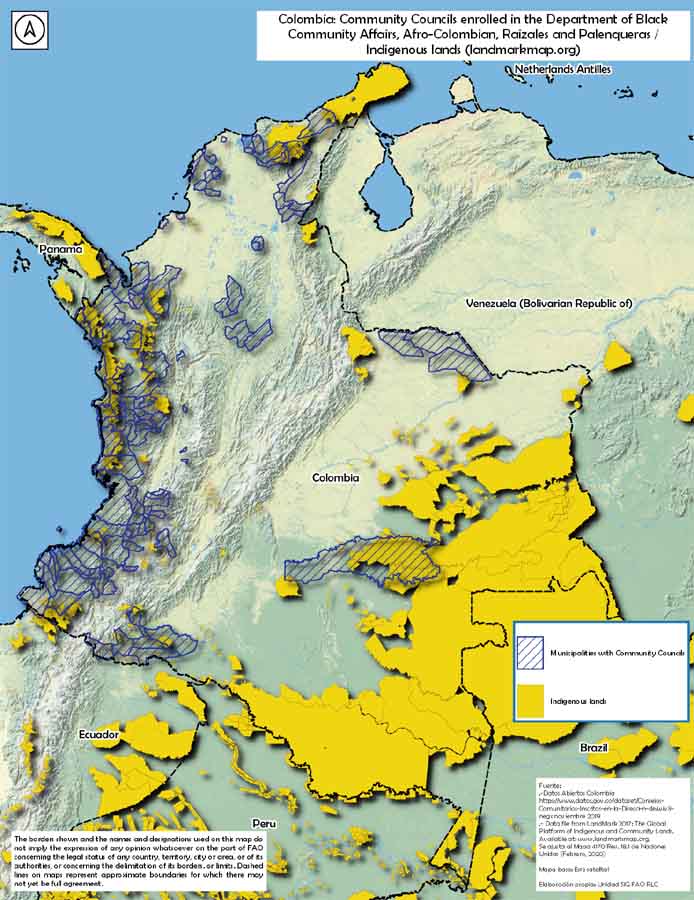The importance of the territories where indigenous and tribal peoples are involved in communal forest governance
b. The forests in the tribal peoples’ territories
Much less is known about the forests of the tribal peoples than those of indigenous peoples. Brazil has the largest area of tribal territories (Quilombolos), but there is no reliable estimate about the size of that area, much less of its forest cover. Journalistic sources mention that Quilombolos cover twenty million hectares, but do not mention the source of that estimate or how it was calculated (Belmaker, 2018). Nor are there good estimates of the area occupied by Suriname’s Maroons, which may be millions of hectares (Kambel, 2006).
In total, over the last thirty years, governments have titled about eight million hectares of tribal peoples’ collective territories, including five million hectares in Colombia (Map 3), two million hectares in Brazil, and one million hectares between Ecuador, Honduras, and Nicaragua (Rapoport Center, 2009; Herrera Arango, 2017; RRI, 2020). Most of that has forest cover. In addition to Brazil and Surinam, significant areas remain to be titled in Colombia (mostly outside the biogeographic Choco region), Ecuador’s Pacific region, and the north coast of Honduras. However, the area that could be titled in those countries probably does not exceed four million hectares in total. In total there are probably between 320 and 380 million hectares of forests in indigenous and tribal territories, including areas governments have formally recognized and those they have yet to recognize.
MAP 3. Afro-Colombian and indigenous territories with collective land titles in Colombia.



